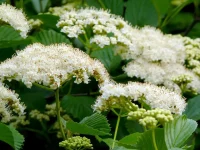Carolina Silverbell
Carolina Silverbells are gorgeous native trees—perfect for statement trees or front yard additions. (They also look amazing when planted in groups, if you have the space!) Their delicate bell-shaped flowers cover the branches in the spring, followed by green leaves and warm yellow foliage in the fall. Carolina Silverbells are also extremely easy to care for. They do well in a range of soil, light, and placements, and pruning is not necessary—making them great for beginning gardeners. Scroll on to learn more.
- Full Sun, Part Sun
- Small Tree (15-30')
- Spring flowers
- Pollinator lifeline


Where are Carolina Silverbells native?
Carolina Silverbell’s native range is—as you may guess—from South Carolina west to Arkansas, along with a surprising New York state! While this is their native range, you will find them in nurseries from New York south to Florida.
Where can I buy Carolina Silverbell?
Sadly, many native plants like Carolina Silverbell can be challenging to find at conventional nurseries. But we are here to help! Here are four other ways to source this amazing native shrub:
Where can I find seeds and plants?
Finding native plants can be challenging (we partly blame Marie Antoinette.) To make it easier, we’ve assembled four sourcing ideas.
Native Nursery List
300+ native nurseries makes finding one a breeze
Online Native Plant Sellers
We've included 100+ online resources to help
Society Plant Sales
Every state has a native plant society; find yours
Online Communities
Local Facebook groups are a great plant source
What are other flowering native trees?
So glad you asked! Check out Redbuds, Tulip Trees, Franklin Trees, Fringe Trees, native dogwoods, and magnolias if you want to plant a garden in the sky.
What are good pairings for Carolina Silverbell?
There are so many native plants that are excellent pairings for Carolina Silverbell and thrive in Southern, Mid-Atlantic, and Northeast gardens. Some excellent companions include:
Carolina Silverbell is a forgotten native treasure that deserves high visibility in our yards and landscapes—they are especially great in front yards. Its carefree planting needs combined with its four-season beauty make it a no-brainer for anyone living in the South, Mid-Atlantic, or lower Northeast. You may have to call around to local nurseries to find one, but it is well worth the effort. Happy planting!
Sources
- USDA, Carolina Silverbell
- Nelson, Gil. Best Native Plants for Southern Gardens: A Handbook for Gardeners, Homeowners, and Professionals, (2010).
- Taylor, Patricia A. Easy Care Native Plants: A Guide to Selecting and Using Beautiful American Flowers, Shrubs, and Trees in Gardens and Landscapes. (1996), 125.






















